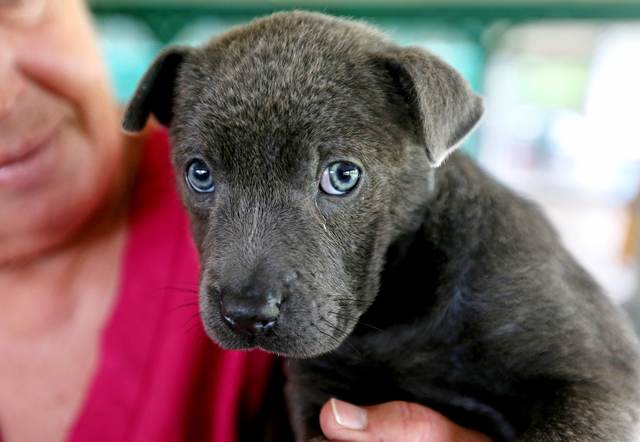Of the more than 10,000 animals euthanized by the Hawaii Island Humane Society last year, only 3 percent fell into the category of adoptable, according to Hawaii Island Humane Society Executive Director Donna Whitaker. ADVERTISING Of the more than 10,000
Of the more than 10,000 animals euthanized by the Hawaii Island Humane Society last year, only 3 percent fell into the category of adoptable, according to Hawaii Island Humane Society Executive Director Donna Whitaker.
“Ninety-seven percent were mongoose, chickens, feral cats, ill, injured or aggressive dogs, cats and other species, and at the owner’s request,” she said. “Of the adoptable animals, we were unsuccessful at finding homes for 337 dogs and cats.”
Adoptable animals, Whitaker said, are those that are healthy with no serious behavioral issues, such as biting.
A total 10,197 animals — just shy of 28 per day — were put down by HIHS islandwide in 2014. Cats accounted for 41 percent of the total, while dogs made up 26 percent. Additionally, livestock and farm animals accounted for 9 percent, roosters 11 and mongoose 13, according to HIHS.
“Euthanasia is administered humanely by IV injection by highly trained staff, and animals are then taken to a prepared site at the landfill for burial,” Whitaker said.
In comparison, the shelter put down 12,578 animals during the 2011 fiscal year, compared to 10,922 four years earlier, as previously reported by the Tribune-Herald.
The biggest challenge for HIHS continues to be homeless animals, according to Whitaker. The society takes in approximately 15,000 homeless animals annually, or about 41 per day; down from a high of 18,000 in 2009.
“This number often shocks people, until you consider that one little unspayed kitty can start reproducing as young as five months old,” she said. “Over her reproductive years, her litters could populate one kitty in every home in a subdivision as large as Leilani Estates or Kona Palisades.”
Pet overpopulation, Whitaker said, will only be curbed with spay and neuter efforts in the long-term. HIHS is working to spread that message and offer low-cost options for pet owners at its shelters.
“If more people would step forward and have their animals spayed or neutered, we could fix the problem of homeless animals on Hawaii Island,” she said.
The good news, Whitaker said, is that the number of adoptable animals requiring euthanasia has “plummeted to 10 or less” per month. Her own figures, however, suggest that average monthly figure for 2014 was closer to 21.
“We are on the right course to achieve success, and we believe we can get that number down to zero,” she said.
Adoptable animals are the target population for programs like Poi
Dogs from Paradise, which recently began transferring animals to a shelter in Oregon for adoption.
Over the past four fiscal years, county funding for HIHS services has fluctuated between $1.86 million in FY 2011 and $1.96 million last fiscal year. During that same four-year period, donations to the shelter nearly doubled, from $483,500 in FY 2011 to $864,500 last year.
Whitaker said fundraising bridges the gap to fully fund HIHS operations at its three shelters, located in Kona, Keaau and Waimea.
“Our big-hearted donors come in all sizes — from the small, but very meaningful gifts of schoolchildren to sizable foundation grants,” she said.
Just last month, during HIHS’s annual Tropical Paws fundraiser, Big Island residents Anne and John Ryan contributed $500,000, while part-time residents Vivian Dixon and John Chapple donated $250,000.
When it comes to intake, no two shelters are the same. At its Waimea shelter, HIHS takes in twice as many dogs as cats, along with a number of surrendered horses.
At the Kona shelter, slightly more cats than dogs arrive, but there are also an equal number of other animals, including mongoose, roosters, goats, ducks, rabbits and goats.
As for reducing the number of animals being put down, Whitaker said HIHS is making progress every year.
“This is credited to the forward thinking spay/neuter programs started in 2009 (the experts say it takes five years to show progress in animal intake with innovative surgical programs and we are right on target!) and the message to Adopt Your New Best Friend,” she wrote.
HIHS’ most recent annual report was completed in 2011. Whitaker said the shelter is hoping it can reallocate resources to complete another this year. If that happens, the report would be available a few months after the close of the current fiscal year on June 30.
Email Chris D’Angelo at cdangelo@hawaiitribune-herald.com





